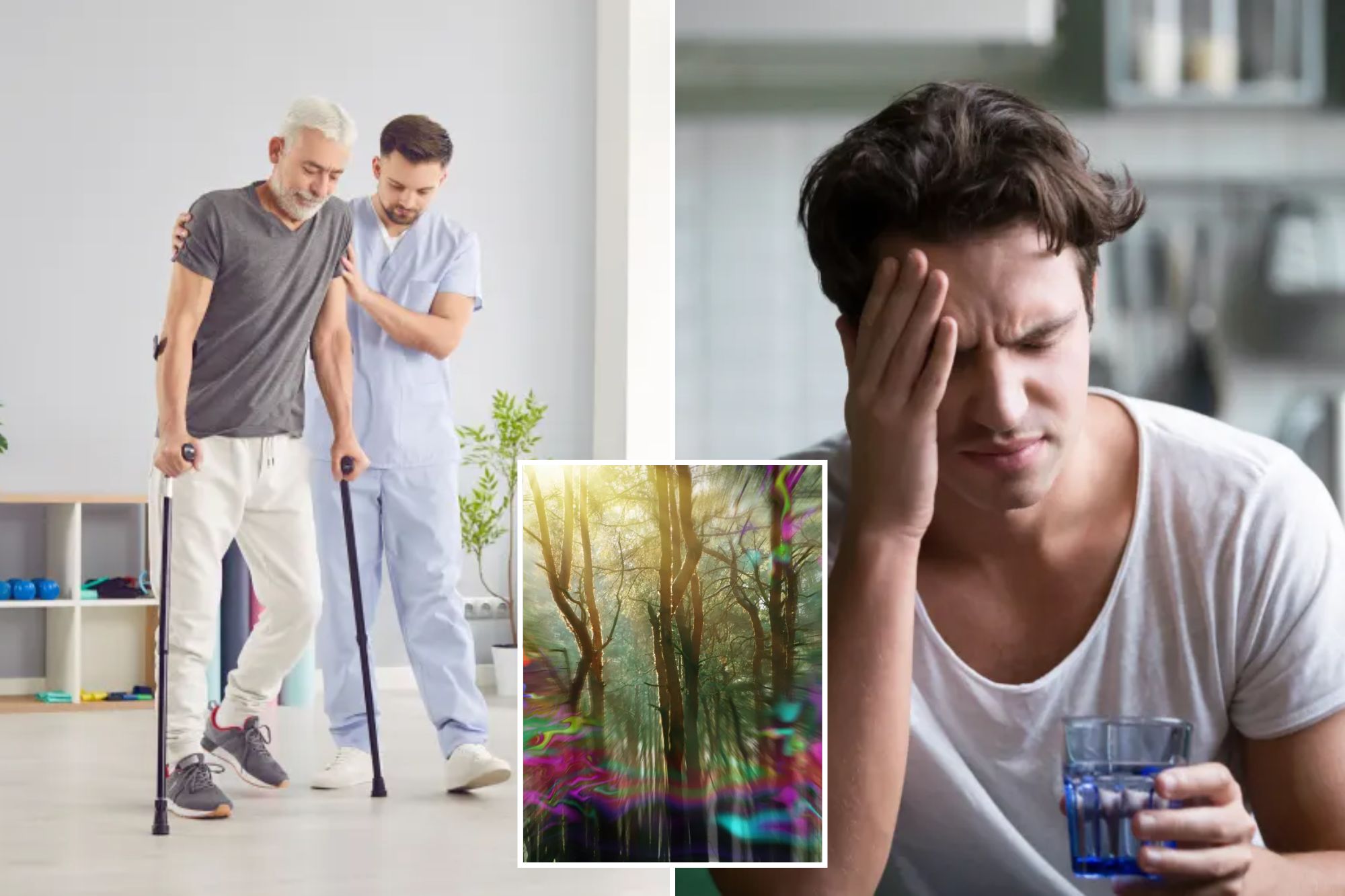
The rates of young people suffering from rising shocks have been increasing, with a CDC ratio last year finding a 14.6% increase in people aged 18-44 and an increase of 15.7% from the ages of 45-64.
Even more worrying is that in many cases, these people lack traditional risk factors.
“Up to half of all ischemic shocks in young adults are of unknown causes, and they are more common in women,” said Dr. Jukka Putaala, head of the hit unit at Helsinki University Hospital in Finland and the main author of the study.
A new study that aims to understand which risk factors have the greatest impact – and found a startling connection to a very common condition.
The team looked at 12 traditional risk factors (including those like diabetes, smoking and overweight) and 10 non -traditional factors – which include autoimmune diseases, IBS, chronic kidney disease and migraines with aura.
They found that each non -traditional risk factor a patient had increased his risk in the brain from a 70%uncle.
It is even worse for people who also have an ordinary heart defect called the Foramen Oval Patent (PFO), which affects 1 in 4 people. For them, those non -traditional risk factors more than double their risk in the brain.
And among all those non -traditional risk factors, the researchers found that migraine with atmosphere was the worst.
“We were aware of the important role of migraine with the atmosphere in this population of patients based on previous knowledge, but we were surprised to be so profound, especially when its prevalence and association strength was put into perspective with traditional stroke factors,” said the main investigator Dr. Jukka Putaala for Medscape Medical News.
About 39 million Americans suffer from migraines, and 20% experience an atmosphere in which intense headaches are associated with sensory issues such as ignition lights and blind spots.
This means that nearly 8 million people in the US may be at an increased risk due to this condition.
And migraines are generally more common in women, who make up more than three times more cases than men.
“Why migraine carries a high risk of cryptogenic shock in young people is a complex question and guarantees further research,” Putala added, pointing out that young women should be asked about their Migraine history by doctors.
“For effective prevention, careful and routine assessment of traditional and non -traditional risk factors in young people is critical,” he said.
Specific factors of women such as gestational diabetes or pregnancy complications also played a major role, increasing the risk of stroke by 70% whether the risk was traditional or non -traditional.
But before you rush to the doctor because you are seeing bright spots or zigzagging lines with headaches, keep in mind that the study has some restrictions.
First, it was an observer, it means that the researchers were reviewing existing data, so they could not prove cause and effect, just a connection.
The findings also rely on self-reported risk factors, which can be unreliable. Plus, the study sample was largely white, which limits how widely the results can be implemented for other demographics.
Shocks are not just for the elderly
Yeardo year, more than 795,000 Americans suffer from a stroke – that’s every 40 seconds. Strokes claim about 140,000 live in SH.BA every year, making it the fifth leading cause of death and a major disability impetus.
While shocks in the elderly over 65 remain the most common, the number of shocks in young adults is increasing. Some studies show an increase of up to 15% in recent years.
Doctors have speculated that growth can be linked to weak diets, lack of exercise, increased overweight levels and an increase in chronic health conditions among young adults. However, this new study suggests that non -traditional risk factors are also playing a role.
“Recognizing the specific risks that affect women and those who are not usually seen … can change our approach to examination for these risks and education of our patients throughout their lives,” said Dr. Tracy E. Madsen, Chairman of the American Heart Association of the Committee of Clinical Cardiology/Stroke for Women’s Health Sciences, which was not included in the study.
This can have a major impact on improving the stroke results – or even preventing them altogether. Experts estimate that about 80% of shocks are avoiding lifestyle changes and proper management of risk factors.
#risk #stroke #increase #condition
Image Source : nypost.com